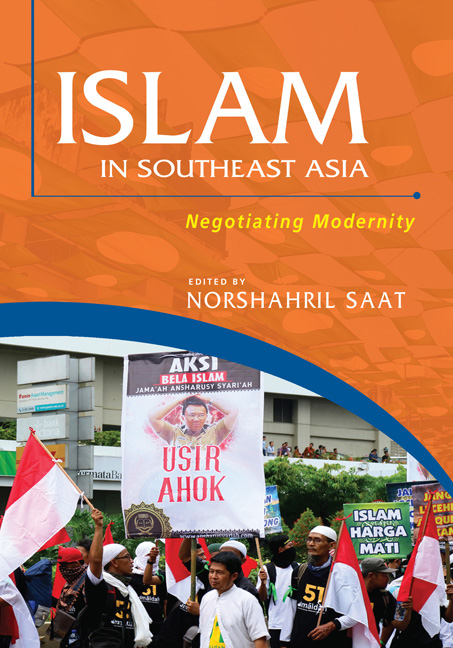9 - Shariah Revivalism in Singapore
from Section III - Singapore
Published online by Cambridge University Press: 08 June 2019
Summary
INTRODUCTION
Since the 1970s, Southeast Asia has witnessed the emergence of religious resurgence amongst the Malays, popularly referred to as the dakwah movement. Essentially an urban phenomenon, it is manifested in a puritanical understanding and experience of Islam expressed in various domains of life, not excluding the Muslim law otherwise known as Shariah. While there has been considerable research on the problems of Shariah revivalism in neighbouring countries, the same cannot be said for Singapore, where the Muslims are subjected to the same laws as non-Muslims in all areas except in the domain of the family and inheritance. In these areas, the AMLA (1968), supplemented by the classical Muslim law, in particular the tenets of the Shafie school, bind them while non-Muslims are subjected to the Woman's Charter (1960). This chapter analyses the mode of thinking of Singapore's Shariah revivalist proponents based on their discourse. It argues that their imagination of the Shariah is not only alienated from the legal history and tradition of the community, but reflects and breeds exclusivist and dogmatic perceptions of Shariah which impedes prospects for the development of effective Muslim law, imperative for the well-being of Muslims and the wider community.
ISLAMIC RESURGENCE
Shariah revivalism is a major facet of the Islamic resurgence in Singapore that emerged about a decade after Independence amidst unprecedented social change induced by the process of development and nation building. For the Malays already mired in socio-economic problems under the colonial rule, adaptation to the demands of the new socio-political conditions proved highly challenging. Their stark socio-economic lag compared to non- Malays quickly drew the attention of scholars and community leaders alike who warned that their manifold problems did not bode well for the young nation as a whole.
In their attempts to alleviate the problems and propel the community's progress, the Malay elites constantly evoked religious values and cultural traditions, an effort reinforced by the government's emphasis on multiculturalism in its search for national identity. The turn to Islam as ballast for the community's socio-economic progress was neither novel nor unexpected given its strong influence on the lives of the Malays. However the potential of the religion in preparing and facilitating adaptation to the demands of modernization in the value sphere was impeded by the emergence of a religious experience strongly characterized by exclusivist, puritan and authoritarian traits.
- Type
- Chapter
- Information
- Islam in Southeast AsiaNegotiating Modernity, pp. 195 - 230Publisher: ISEAS–Yusof Ishak InstitutePrint publication year: 2018

